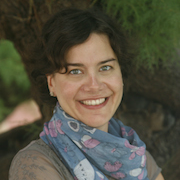Research
Cell movement is essential for animal development, wound healing and defence from infection. We are interested in how cell movement is guided to functional destinations. We focus on cells of the immune system (leukocytes), which are remarkably capable of traversing different tissue environments and migrating on demand to sites where their antimicrobial function is needed.
Our aim is to understand how leukocyte motion is organised at sites of tissue damage to generate inflammatory responses. Neutrophils are the first cells to be recruited to damaged loci where they execute important antimicrobial functions, such as phagocytosis or secretion of microbicidal compounds. However, excess neutrophil accumulation and inflammation can cause collateral tissue damage and be detrimental for tissue integrity. How do these cells organise their recruitment to achieve the right magnitude of an inflammatory response? What are the chemical and physical cues that allow them to distinguish damaged from healthy tissue? How do they interpret and integrate these signals? How do they make key decisions such as which way to go, how long to stop and whether to call for reinforcements? If we can understand the logic of neutrophil migratory decisions in their complex native environments, we would be better placed to predict and manipulate the behaviour of these cells in therapeutic settings.
To address these questions in mechanistic detail in vivo, we exploit the zebrafish larva, whose small size and transparency make it ideal for high-resolution in vivo imaging. We record leukocyte dynamics using advanced microscopy techniques and use quantitative and statistical methods to determine how these are modulated by chemical and physical signals. We combine this with a variety of genetic, optogenetic or chemical manipulations, to functionally link molecular, cellular and tissue parameters of leukocyte guidance. Through this integrated approach, our goal is to obtain a better understanding of how leukocytes interpret complex environmental cues to generate effective immune responses.
Collaborators
Kristian Franze (PDN, Max Planck Nuremberg)
Ewa Paluch (PDN, University of Cambridge)
Daniel Irimia (Harvard University)
Martin Welch (Biochemistry, University of Cambridge)
Lab members
Hazel Walker
Hugo Poplimont (PhD student)
Antonios Georgantzoglou (post-doc)
Past members
Kim Westerich
Caroline Coombs (PhD student)
Alexis Crockett
Morgane Boulch
Publications
Antonios Georgantzoglou , Hugo Poplimont , Hazel A Walker , Tim Lämmermann , Milka Sarris A two-step search and run response to gradients shapes leukocyte navigation in vivo Journal of Cell Biology (2022) 221 (8): e202103207. PMID: 35731205 DOI: 10.1083/jcb.202103207
Antonios Georgantzoglou, Joanna Matthews , Milka Sarris Neutrophil motion in numbers: How to analyse complex migration patterns Cells and Development Volume 168, December 2021, 203734 DOI: 10.1016/j.cdev.2021.203734
Antonios Georgantzoglou, Caroline Coombs, Hugo Poplimont*, Hazel A. Walker*, Milka Sarris Live Imaging of Chemokine Receptors in Zebrafish Neutrophils During Wound Responses JoVE Journal December 2020 doi: 10.3791/61679
Poplimont H., Georgantzoglou A., Boulch M., Coombs C., Papaleonidopoulou F., Sarris M*. Neutrophil Swarming in Damaged Tissue Is Orchestrated by Connexins and Cooperative Calcium Alarm Signals. Current Biology. S0960982220306692 (2020) doi:10.1016/j.cub.2020.05.030. See also preview by Palomino-Segura, M. & Hidalgo, A. Immunity: Neutrophil Quorum at the Wound. Current Biology CB 30, R828–R830 (2020)
Coombs C, Georgantzoglou A, Walker HA, Patt J, Merten N, Poplimont H, Busch-Nentwich EM, Williams S, Kotsi S, Kostenis E, Sarris M (2019) Chemokine receptor trafficking coordinates neutrophil clustering and dispersal at wounds in zebrafish,
Nature Communications volume 10, Article number: 5166
Sarris M, Olekhnovitch R, Bousso P, (2016), Manipulating leukocyte interactions in vivo through optogenetic chemokine release, Blood
Sarris M, Sixt M, (2015), Navigating in tissue mazes: chemoattractant interpretation in complex environments, Curr. Opin. Cell Biol, 36, 93-102
Sarris M, Masson JB, Maurin D, Van der Aa LM, Boudinot P, Lortat-Jacob H, Herbomel P, (2012), Inflammatory chemokines direct and restrict leukocyte migration within live tissues as glycan-bound gradients, Current Biology, 22, 2375-82
Sarris M, Betz AG, (2011), Live imaging of dendritic cell-Treg cell interactions, Methods in Molecular Biology, 707, 83-101
Sarris M, Betz AG, (2009), Shine a light: imaging the immune system, European Journal of Immunology, 39, 1188-1202
Sarris M, Andersen KG, Randow F, Mayr L, Betz AG, (2008), Neuropilin-1 expression on regulatory T cells enhances their interactions with dendritic cells during antigen recognition, Immunity, 28, 402-413
Teaching and Supervisions
Part IB NST Physiology
Part IA MVST Homeostasis
Other Professional Activities
Lab News:
Dr Milka Sarris, Assistant Professor of the Department of Physiology, Development and Neuroscience, was one of eight University of Cambridge researchers to win a 2023 European Research Council (ERC) Consolidator Grant.
The ERC is the premier European funding organisation for excellent frontier research. This year it has awarded €657m in grants to 321 researchers across Europe. Consolidator grants are given to excellent scientists, who have 7 to 12 years’ experience after their PhDs, to pursue their most promising ideas.
Dr Sarris was awarded a grant for LongWayFromFlam: The uncharted journeys of inflammatory cells and their functional implications. Dr Sarris said: “My group studies how cells of the immune system move in the body to generate and resolve inflammatory responses. To study these processes, we use state of the art microscopy techniques and genetic approaches in zebrafish, a small vertebrate model organism.
“I am absolutely thrilled to have won this award at a key stage of my career and to be able to pursue an ambitious new line of fundamental research. It was a long process and I remain very grateful to my university colleagues, the peer reviewers and the evaluation committee for their feedback.”


